Home>Garden Essentials>How Sunflower Seeds Are Made
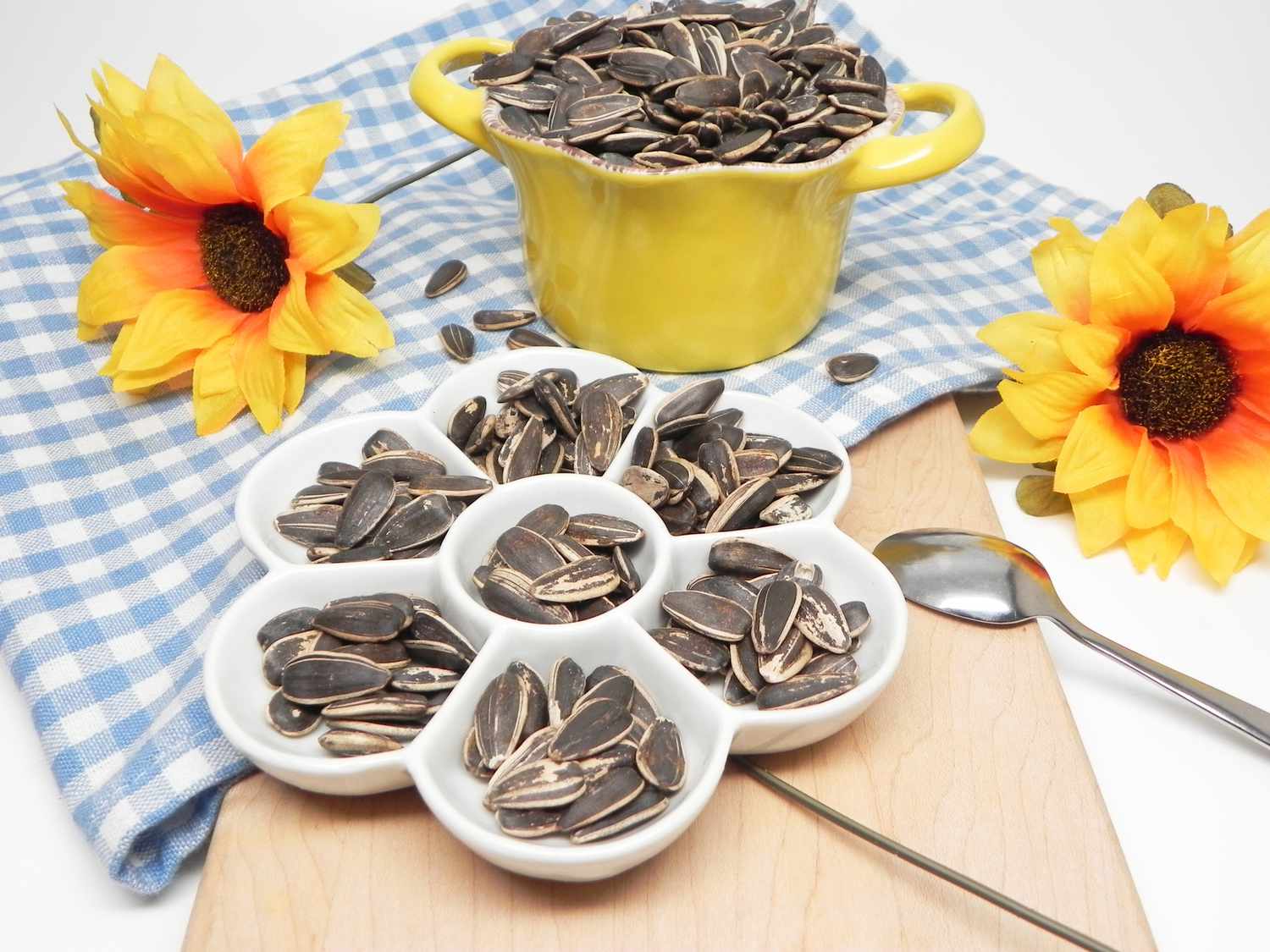

Garden Essentials
How Sunflower Seeds Are Made
Modified: October 18, 2024
Learn about the fascinating process of how garden sunflower seeds are made, from cultivation to harvest, and discover the joy of growing your own!
(Many of the links in this article redirect to a specific reviewed product. Your purchase of these products through affiliate links helps to generate commission for Storables.com, at no extra cost. Learn more)
Introduction
Welcome to the fascinating world of sunflower seeds! Whether you are an avid gardener, a health-conscious individual, or simply a culinary enthusiast, understanding how sunflower seeds are made can be both intriguing and informative. Sunflowers, with their stunning yellow petals and towering stems, are not only a beautiful addition to any garden but also a source of delicious and nutritious seeds.
In this article, we will delve into the process of growing, harvesting, and preparing sunflower seeds for consumption. From the initial stages of planting and nurturing sunflowers to the final steps of packaging and distribution, we will uncover the journey that these tiny seeds embark on before they find their way into our homes.
But before we dive into the details, let’s take a moment to appreciate the versatility and benefits of sunflower seeds. Not only are they a delicious snack on their own, but they can also be incorporated into a variety of recipes to add flavor, texture, and nutritional value. These seeds are packed with essential nutrients, including healthy fats, protein, fiber, and various vitamins and minerals.
So, put on your gardening gloves as we explore the world of sunflower seeds, from planting to roasting, and discover the wonders that these seeds have to offer!
Key Takeaways:
- Sunflower seeds are grown by planting sunflowers in well-draining soil with ample sunlight. After harvesting, the seeds are removed from their shells and can be roasted for a delicious and nutritious snack or ingredient in various recipes.
- Sunflower seeds offer numerous health benefits, including being rich in essential nutrients, promoting cardiovascular health, and supporting bone health and digestion. They can be used in a variety of culinary creations, from snacking to baking and cooking, adding a delightful crunch and nutty flavor to dishes.
Read more: How To Make Sunflower Seeds From A Sunflower
Growing Sunflowers
The journey of sunflower seeds starts with the cultivation of sunflowers themselves. Sunflowers are relatively easy to grow and can thrive in various climates, making them a popular choice for home gardeners and commercial farmers alike.
When it comes to choosing the right spot for planting sunflowers, it’s important to select an area that receives full sun. Sunflowers are known for their ability to track the sun’s movement throughout the day, so providing them with ample sunlight is crucial for their growth and development.
Before planting sunflower seeds, it’s essential to prepare the soil properly. Sunflowers thrive in well-draining soil enriched with organic matter. Preparing the soil by removing weeds, loosening it with a garden fork, and adding compost or aged manure will help create a fertile environment for the sunflower seeds to germinate and grow.
The ideal time to plant sunflower seeds is in the late spring or early summer when the soil temperature has reached around 50-55 degrees Fahrenheit (10-13 degrees Celsius). You can sow the seeds directly into the ground or start them indoors and later transplant them outside.
When planting sunflowers, space the seeds about 1 to 2 inches (2.5 to 5 centimeters) deep and around 6 inches (15 centimeters) apart. You can adjust the spacing based on the variety of sunflowers you are growing, as some may require more or less space to spread out.
After planting, water the seeds gently to keep the soil moist but not waterlogged. As the sunflower seeds germinate and sprout, continue to water them regularly, ensuring that the soil remains consistently moist throughout their growth cycle.
As the sunflowers begin to grow, they will develop thick stems and large leaves. Some sunflower varieties can reach heights of up to 12 feet (3.6 meters) or more, so it’s important to provide them with support to prevent them from toppling over in strong winds. You can use stakes or cages to support the stems and keep the plants upright.
Throughout the growth process, it’s essential to monitor the sunflowers for pests and diseases. Common pests that may affect sunflowers include aphids, caterpillars, and fungal diseases such as powdery mildew. Regular inspection and appropriate pest control measures, such as organic insecticides or companion planting, can help ensure the health and vitality of the sunflower plants.
As the summer days pass and the sunflowers reach their full potential, they will begin to produce beautiful blooms that turn their heads to face the sun. These vibrant flowers attract bees, butterflies, and other pollinators, making them a beneficial addition to any garden.
Once the flowers start to fade and the petals dry out, it’s a sign that the sunflowers are nearing maturity and the seeds are ready for harvesting. In the next section, we will explore the process of harvesting sunflower seeds and ensuring their optimal quality.
Harvesting Sunflower Seeds
Once the sunflowers have completed their beautiful blooming phase and the flower heads begin to dry out, it’s time to harvest the sunflower seeds. Harvesting sunflower seeds involves a few essential steps to ensure that the seeds are properly collected and preserved.
The first step in harvesting sunflower seeds is to observe the flower heads closely. The petals should have fallen off, and the back of the flower head should be a golden brown color. This indicates that the seeds have reached their maturity and are ready for harvesting.
Use a pair of sharp pruning shears or garden scissors to cut off the flower heads from the sunflower stalk. Leave a few inches of stem attached to the flower head to make the handling process easier later on.
Once the flower heads are harvested, you can place them on a clean, dry surface or a tray to continue drying. It’s crucial to protect the harvested flower heads from moisture and pests, as excess moisture can cause the seeds to spoil, and pests can damage the seeds.
During the drying process, you may notice that the underside of the flower head contains hundreds of small, dark seeds. These are the sunflower seeds we are looking to harvest. As the flower heads dry, the seeds will loosen and are easier to remove.
After a few weeks of drying, it’s time to extract the sunflower seeds from the flower heads. Gently rub or roll the flower heads between your hands or use a fork to loosen the seeds. As you do this, you will notice that the seeds start to fall out of their protective shells.
To separate the seeds from the shells, you can place the sunflower heads in a large bowl or a clean cloth and gently crush or roll them. This will help release the seeds, which can then be separated using your fingers or a sieve.
Once you have collected the sunflower seeds, it’s important to remove any remaining debris or plant material. You can do this by gently blowing on the seeds or using a fan to create a light breeze, causing the lighter particles to fly away.
At this stage, the sunflower seeds are ready for further processing and preparation. It’s important to note that freshly harvested sunflower seeds may still contain some moisture, so it’s essential to dry them thoroughly before storage or consumption. Spread the seeds out on a clean, dry surface and allow them to air-dry for a few days until they are completely dry and brittle.
Once the sunflower seeds are dried, they can be stored in airtight containers or jars in a cool, dry place. Proper storage will help maintain the freshness and quality of the seeds for an extended period.
Now that we have harvested and prepared the sunflower seeds, let’s explore the next steps involved in cleaning and preparing them for consumption.
Removing the Sunflower Seeds
After harvesting the sunflower heads and drying them, the next step in the process is to remove the sunflower seeds from their shells. While some may prefer to leave the shells intact for a more rustic eating experience, many people prefer to enjoy the nutty goodness of the seeds without the outer hulls.
There are a few methods you can use to remove the sunflower seeds from their shells, depending on your preference and the amount of time and effort you’re willing to invest. Here are three common techniques:
1. Hand Cracking
Hand cracking is perhaps the simplest and most straightforward method of removing sunflower seeds from their shells. To begin, take a sunflower seed between your thumb and forefinger and apply gentle pressure until the shell cracks open. Be careful not to apply too much force, as you don’t want to crush the seed inside.
Once the shell cracks, you can easily pry it open and free the seed from its casing. Repeat this process for the remaining sunflower seeds, and you’ll have a bowl full of delicious, shell-free seeds ready to enjoy.
Read more: How To Get Sunflower Seeds From A Sunflower
2. Hammer Method
If you have a larger quantity of sunflower seeds to process or prefer a faster method, the hammer method may be the way to go. Gather a clean kitchen towel and place it on a sturdy surface, such as a wooden cutting board or the concrete floor of your garage or patio.
Spread the sunflower seeds on the towel in a single layer, and fold the towel in half to cover the seeds. Using a hammer or mallet, gently tap and crush the shells, being careful not to exert too much force. The towel will help contain the shells and prevent them from scattering everywhere.
After a few gentle taps, unfold the towel and separate the crushed shells from the seeds. You may need to pick out any remaining shell fragments or blow on the seeds to remove any loose pieces. The result will be a batch of shelled sunflower seeds ready for further processing or consumption.
3. Mechanical Cracker
If you have a larger quantity of sunflower seeds or prefer a more efficient and hands-free approach, a mechanical cracker or a seed huller can be a valuable tool. These devices are specifically designed to remove the shells from sunflower seeds quickly and efficiently.
To use a mechanical cracker or huller, simply feed the sunflower heads or unshelled seeds into the machine as per the manufacturer’s instructions. The device will separate the shells and release the inner seeds, saving you time and effort. Check the seeds occasionally for any remaining shell fragments and remove them before storing or using the seeds.
Regardless of the method you choose, make sure to handle the sunflower seeds with care and avoid crushing or damaging the inner kernels. Once the seeds are removed from their shells, they can be used in a variety of culinary applications or roasted and seasoned for a delicious and nutritious snack.
Now that we have successfully removed the sunflower seeds from their shells, let’s explore the next steps involved in cleaning and preparing the seeds for consumption.
Cleaning and Preparing the Seeds
After removing the sunflower seeds from their shells, it’s important to clean and prepare them before consuming or using them in various recipes. Cleaning the seeds helps remove any remaining shell fragments, dirt, or debris, ensuring that you have a batch of clean and ready-to-use seeds.
1. Dry Method
One common method for cleaning sunflower seeds is the dry method, which involves using air or gentle blowing to remove any unwanted particles. Start by spreading the seeds out on a clean, dry surface such as a baking sheet or a large tray.
Using a fan or a hairdryer set on low, create a gentle air current to blow away any loose shell fragments or debris. Move the seeds around with your hands or a utensil to ensure that all sides are exposed to the airflow. Continue this process until you’re satisfied that the seeds are clean and free of unwanted particles.
Read more: How To Flavor Sunflower Seeds
2. Water Method
Alternatively, you can use the water method to clean the sunflower seeds. Fill a large bowl with water and add the seeds. Gently swish the seeds around in the water, allowing any debris or remaining shell fragments to float to the top.
Once debris has risen to the surface, carefully pour out the water, taking care not to lose any seeds. Repeat this process a few times until the water runs clear and the seeds are visibly clean. Be cautious not to pour out any seeds along with the water.
3. Sieve or Colander Method
Another effective method for cleaning sunflower seeds is to use a sieve or colander. Place the seeds in the sieve or colander and rinse them under running water, gently rubbing the seeds with your fingers to dislodge any remaining debris or shell fragments.
Continue rinsing and rubbing until the water runs clear and the seeds are thoroughly cleaned. Be mindful not to lose any seeds down the drain while rinsing.
After cleaning the sunflower seeds, it’s important to let them dry completely before using or storing them. Spread the seeds out on a clean, dry surface or a baking sheet and allow them to air-dry for several hours or overnight, ensuring that no moisture remains.
Once the seeds are completely dry, they are ready to be used in a variety of culinary preparations or seasoned and roasted as a snack. Sunflower seeds can be added to salads, baked goods, granola, or trail mix, providing a delightful crunch and a boost of nutrition.
Now that we have cleaned and prepared our sunflower seeds, let’s move on to the next step in the process – roasting them to enhance their flavor and texture.
Roasting the Sunflower Seeds
Roasting sunflower seeds enhances their flavor, adds a crispy texture, and creates a delicious snack that can be enjoyed on its own or used in various recipes. The roasting process brings out the nuttiness of the seeds and gives them a satisfying crunch. Here’s a simple method for roasting sunflower seeds:
1. Preheat the Oven
Start by preheating your oven to 325°F (163°C). Line a baking sheet with parchment paper or lightly grease it to prevent the seeds from sticking.
Read more: How To Open Sunflower Seeds
2. Prepare the Seeds
In a bowl, combine the cleaned and dried sunflower seeds with your preferred seasonings. You can keep it simple with just a sprinkle of salt, or you can get creative by adding spices like garlic powder, onion powder, paprika, or even a drizzle of honey for a touch of sweetness. Toss the seeds gently to ensure even coating.
3. Spread the Seeds
Spread the seasoned sunflower seeds on the prepared baking sheet in a single layer. Make sure they are evenly spaced to allow for even roasting.
4. Roast the Seeds
Place the baking sheet in the preheated oven and roast the sunflower seeds for about 15 to 20 minutes. Check them periodically and give the baking sheet a gentle shake or stir the seeds to ensure they are roasting evenly. The seeds should turn a golden brown color and become nicely toasted.
5. Cool and Store
Once the sunflower seeds are roasted to your desired level of crispiness, remove them from the oven and let them cool completely on the baking sheet. This will allow them to become even crunchier as they cool down.
After the seeds have cooled, transfer them to an airtight container or resealable bag for storage. Properly stored roasted sunflower seeds can stay fresh for several weeks.
Roasted sunflower seeds make a great snack on their own, but you can also use them in a variety of recipes. Sprinkle them on salads, stir them into yogurt or oatmeal, or use them as a topping for roasted vegetables or soups. Their versatility and rich flavor make them a favorite ingredient in both savory and sweet dishes.
Roasting your own sunflower seeds allows you to customize the flavor and seasoning to suit your preferences. Experiment with different spices or add a touch of sweetness with a sprinkle of cinnamon and sugar. The possibilities are endless!
Now that our sunflower seeds are roasted and ready, let’s explore the next steps involved in packaging and distributing them for consumption.
Read more: How To Shell Sunflower Seeds
Packaging and Distribution
After roasting and preparing sunflower seeds, the next step is packaging and distributing them for consumption. Whether you’re planning to share them with friends and family or sell them commercially, proper packaging and distribution are essential to maintain the quality and freshness of the sunflower seeds.
1. Packaging
When it comes to packaging sunflower seeds, it’s important to choose materials that are clean, food-safe, and can preserve the freshness of the seeds. Consider using resealable bags or airtight containers to prevent moisture and air from entering and affecting the quality of the seeds.
Label the packaging clearly with the name of the product, the date of packaging, and any relevant nutritional information or special instructions. This helps consumers identify and understand the contents of the package.
If you plan to sell the sunflower seeds commercially, check your local regulations and requirements for labeling and packaging standards. Compliance with these regulations is crucial to ensure the safety and legality of your product.
2. Storage
Proper storage is crucial to maintain the freshness and quality of the sunflower seeds. Store them in a cool, dry place away from direct sunlight and heat. Exposure to light, moisture, and high temperatures can degrade the flavor and texture of the seeds, leading to a shorter shelf life.
Consider using a pantry or cupboard to store the packaged sunflower seeds. Make sure the storage area is free from pests and rodents that can damage the packaging and contaminate the seeds.
3. Distribution
The distribution of your sunflower seeds can be done through various channels, depending on the scale and purpose of your operation.
If you’re sharing them with friends, family, or local customers, you can distribute them directly from your home or a designated pickup location. Ensure that you communicate the availability of your sunflower seeds through social media, local community groups, or by word-of-mouth to attract potential customers.
If you’re planning to sell the sunflower seeds commercially, consider setting up an online store or selling them through local farmers’ markets, health food stores, or specialty shops. Establishing relationships with local retailers or partnering with distributors can also help expand the reach of your product.
Ensure that you comply with any necessary legal requirements for selling and distributing food products in your area. This may include obtaining the appropriate licenses, certifications, and adhering to food safety regulations.
Read more: How To Sow Sunflower Seeds
4. Marketing
As you package and distribute your sunflower seeds, marketing plays a crucial role in attracting customers. Create an appealing brand and packaging design that stands out on the shelves or online platforms. Use high-quality images and descriptions to showcase the unique qualities of your sunflower seeds.
Leverage social media platforms, your website, or blog to share recipes, health benefits, and tips on incorporating sunflower seeds into a healthy lifestyle. Engage with your audience by hosting giveaways or offering special promotions to build brand loyalty.
Consider partnering with influencers or collaborating with other businesses in the health and wellness industry to expand your reach and target new audiences.
Packaging and distributing your sunflower seeds requires careful attention to detail and a focus on maintaining the quality and appeal of your product. By ensuring proper packaging, storage, and effective marketing strategies, you can successfully share the delight and health benefits of sunflower seeds with others.
Now that we’ve covered the packaging and distribution process, let’s move on to explore the health benefits of sunflower seeds.
Health Benefits of Sunflower Seeds
Sunflower seeds are not only a delicious snack but also a nutritional powerhouse, packed with a variety of nutrients that promote overall health and well-being. Let’s explore some of the key health benefits of incorporating sunflower seeds into your diet:
1. Rich in Nutrients
Sunflower seeds are a great source of essential nutrients, including vitamin E, vitamin B1 (thiamine), vitamin B6, folate, selenium, magnesium, and phosphorus. They also contain healthy fats, fiber, and protein. These nutrients play vital roles in supporting various bodily functions, including cell protection, energy production, brain health, and immune function.
2. Cardiovascular Health
The healthy fats found in sunflower seeds, such as monounsaturated and polyunsaturated fats, can help reduce LDL cholesterol levels and promote a healthier heart. These fats, along with other nutrients like vitamin E, have been linked to a reduced risk of heart disease, stroke, and hypertension.
Read more: How Much Are Sunflower Seeds
3. Antioxidant Properties
Sunflower seeds are a rich source of antioxidants, including vitamin E and selenium. These antioxidants help neutralize harmful free radicals in the body, reducing oxidative stress and inflammation. By reducing oxidative stress, sunflower seeds may contribute to the prevention of chronic diseases, such as cancer and cardiovascular diseases.
4. Bone Health
Sunflower seeds contain several minerals important for maintaining strong and healthy bones, including magnesium, phosphorus, and copper. These minerals play a crucial role in bone formation and maintenance, helping to prevent conditions like osteoporosis and improving overall bone density.
5. Digestive Health
The high fiber content in sunflower seeds promotes healthy digestion by supporting regular bowel movements and preventing constipation. Fiber also aids in maintaining stable blood sugar levels and promoting a feeling of fullness, making sunflower seeds a satisfying snack that can aid in weight management.
6. Brain Health
Vitamin E, found abundantly in sunflower seeds, is known for its role in maintaining good brain health. It acts as an antioxidant, protecting brain cells from oxidative damage and potentially reducing the risk of age-related cognitive decline and neurodegenerative diseases, such as Alzheimer’s disease.
Read more: How To Plant Sunflower Seed
7. Energy and Metabolism
The combination of healthy fats, protein, and other nutrients in sunflower seeds provides a sustainable source of energy. Additionally, the B vitamins present in sunflower seeds, such as thiamine and vitamin B6, play a crucial role in converting food into energy and supporting proper metabolism.
It’s important to note that while sunflower seeds offer numerous health benefits, moderation is key. They are calorie-dense, so it’s important to be mindful of portion sizes, especially if you are watching your calorie intake.
Incorporating sunflower seeds into your diet can be as simple as topping your salads, cereals, or yogurt with a sprinkle of seeds, or using them as a nutritious ingredient in baking or cooking. Adding these versatile and nutrient-dense seeds to your meals can contribute to a well-balanced and wholesome diet.
Now that we’ve uncovered the health benefits of sunflower seeds, let’s explore some of the culinary uses and creative recipes that incorporate these delightful seeds.
Culinary Uses of Sunflower Seeds
Sunflower seeds are not only nutritious but also incredibly versatile in the kitchen. From adding a delightful crunch to salads and baked goods to being used as the main ingredient in spreads and sauces, sunflower seeds can elevate the flavor and texture of various dishes. Let’s explore some creative culinary uses of sunflower seeds:
1. Snacking
Roasted sunflower seeds make a tasty and healthy snack on their own. Enjoy them straight out of the bag or mix them with dried fruits and nuts for a flavorful trail mix. Their natural nuttiness and satisfying crunch make them a perfect on-the-go snack option.
2. Salad Toppings
Sprinkle toasted or raw sunflower seeds over salads to add a delicious crunch and nutty flavor. They pair well with a variety of salad ingredients, such as leafy greens, tomatoes, cucumbers, and avocado. You can also use them as a substitute for croutons or as a topping for grain-based salads.
Read more: How To Know If Sunflower Seeds Are Bad
3. Baking and Cooking
Sunflower seeds can be used in a wide range of baked goods, such as bread, muffins, cookies, and granola bars. Add them to your favorite recipes for an extra crunch and a nutty twist. You can also use ground sunflower seeds as a substitute for flour in gluten-free baking or as a coating for meat or tofu dishes.
4. Spreads and Sauces
Create delicious spreads and sauces using sunflower seeds as the base ingredient. Blend roasted sunflower seeds with garlic, lemon juice, and olive oil to make a creamy and flavorful sunflower seed hummus. You can also blend them with herbs, cheese, and olive oil to make a pesto-like sauce that pairs well with pasta, roasted vegetables, or grilled meats.
5. Dairy-Free Milk Alternative
If you’re looking for a dairy-free milk alternative, sunflower seed milk can be a great option. Blend soaked and drained sunflower seeds with water, a pinch of salt, and a sweetener of your choice until smooth. Strain the mixture through a cheesecloth or nut milk bag to remove any remaining solids, and you’ll have a creamy and nutritious plant-based milk.
6. Coating for Meat or Tofu
Grind sunflower seeds into a fine powder and use them as a coating for chicken, fish, or tofu dishes. Dip the protein of your choice in beaten egg, then coat it with the ground sunflower seeds before baking or frying. This crust will add a unique texture and flavor to your dishes.
Read more: How To Get Seeds Out Of Sunflowers
7. Garnishes and Toppings
Sprinkle sunflower seeds over soups, stews, roasted vegetables, or grain bowls to add a delightful crunch and enhance their overall flavor. They can be used as a topping for breakfast bowls, smoothies, or yogurt parfaits to provide an extra nutritious and satisfying element to your morning routine.
With their versatility and nutritional profile, sunflower seeds can be easily incorporated into various dishes to boost both flavor and health benefits. Get creative in the kitchen and explore new ways to enjoy the nutty goodness of sunflower seeds.
Now that we’ve explored the culinary uses of sunflower seeds, let’s conclude our journey and summarize the wonders that these tiny seeds offer.
Conclusion
Throughout this journey, we have explored the fascinating world of sunflower seeds – from how they are grown and harvested to how they are cleaned, prepared, roasted, and utilized in various culinary creations. Sunflower seeds offer not only a delightful crunch and nutty flavor but also an array of health benefits and limitless culinary possibilities.
Whether you’re a gardener, a health-conscious individual, or a culinary enthusiast, understanding the process behind sunflower seeds provides a deeper appreciation for these tiny yet powerful gems.
We began with the process of growing sunflowers, from selecting the right location to nurturing their growth and supporting them as they reach for the sun. Moving on to harvesting, we learned when to recognize the perfect time to collect the flower heads and extract the mature seeds.
After removing the seeds from their shells and ensuring they are clean and dry, we explored the process of roasting them to enhance their flavor and texture. The simple act of roasting transforms the seeds into a delectable snack or a versatile ingredient that can be incorporated into a wide range of recipes.
We also uncovered the health benefits of sunflower seeds, such as their rich nutrient composition, cardiovascular support, antioxidant properties, and benefits for bone health, digestion, brain health, and energy production.
But the journey doesn’t end there – sunflower seeds have culinary uses beyond imagination. From snacking on them as a solo treat to using them as toppings for salads, incorporating them into baked goods, spreads, and sauces, sunflower seeds add an irresistible nuttiness and crunch to any dish.
Whether you enjoy them in their purest form or get creative in the kitchen with new recipes, sunflower seeds offer endless possibilities to elevate your culinary experience.
So, whether you’re growing sunflowers in your garden, savoring the health benefits of sunflower seeds, or exploring the rich culinary options they provide, let the journey of sunflower seeds inspire you to embrace their beauty, taste, and versatility.
Now it’s time to go out and enjoy the wonders of sunflower seeds. From the garden to the kitchen, let these tiny seeds continue to bring joy, nutrition, and delight into your life.
Frequently Asked Questions about How Sunflower Seeds Are Made
Was this page helpful?
At Storables.com, we guarantee accurate and reliable information. Our content, validated by Expert Board Contributors, is crafted following stringent Editorial Policies. We're committed to providing you with well-researched, expert-backed insights for all your informational needs.
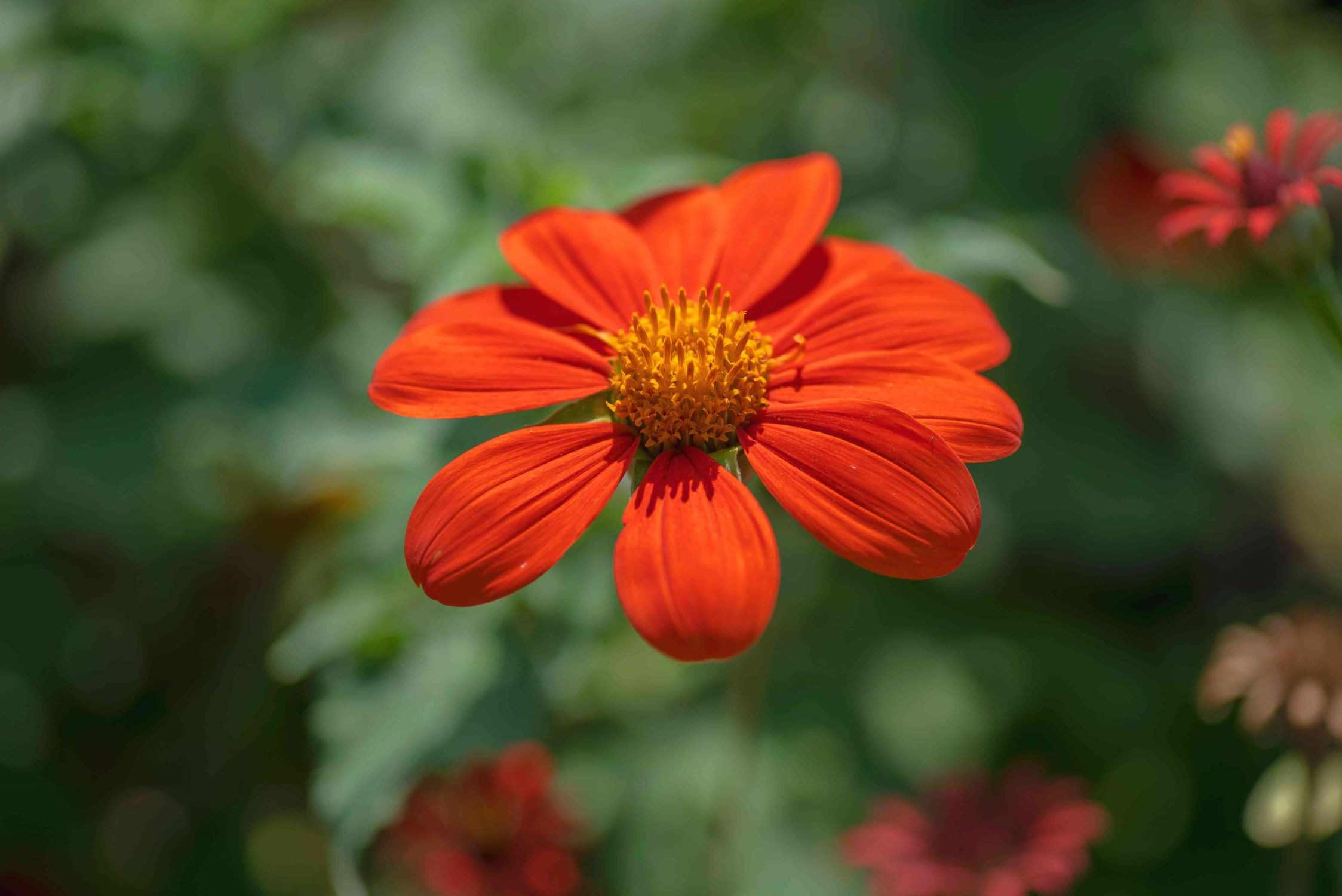
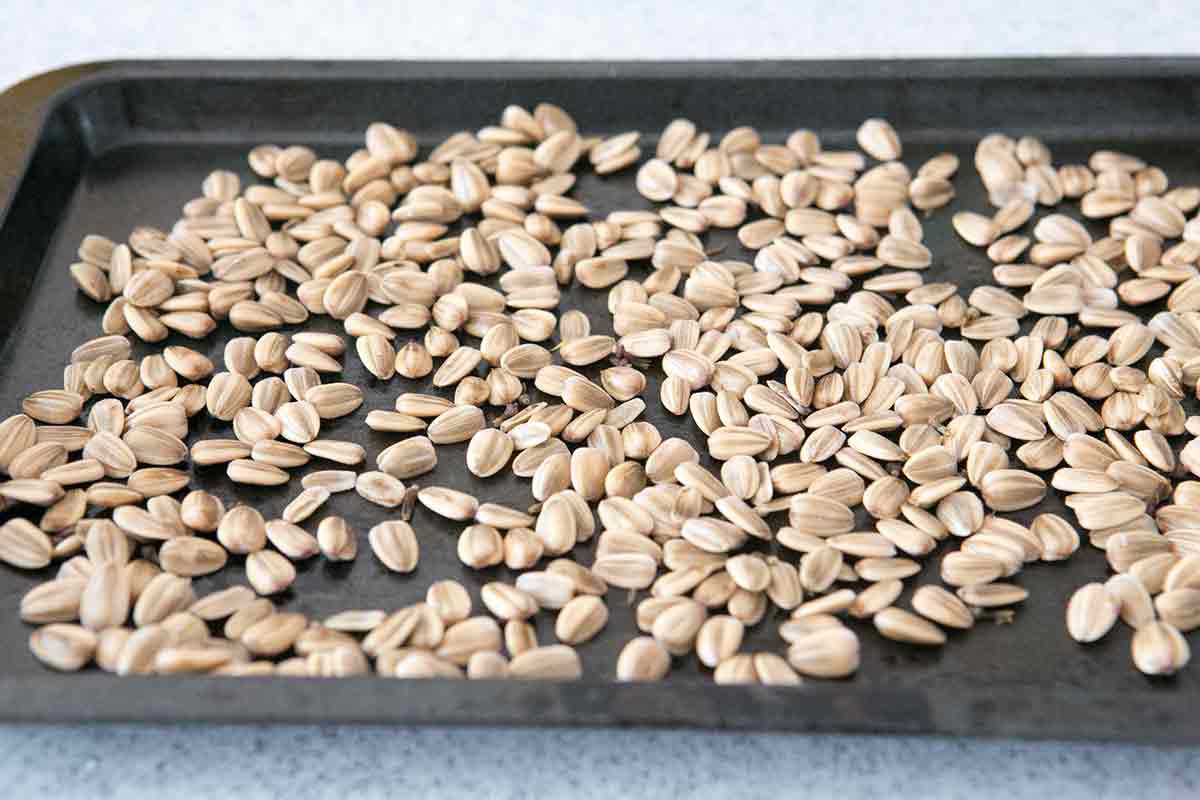
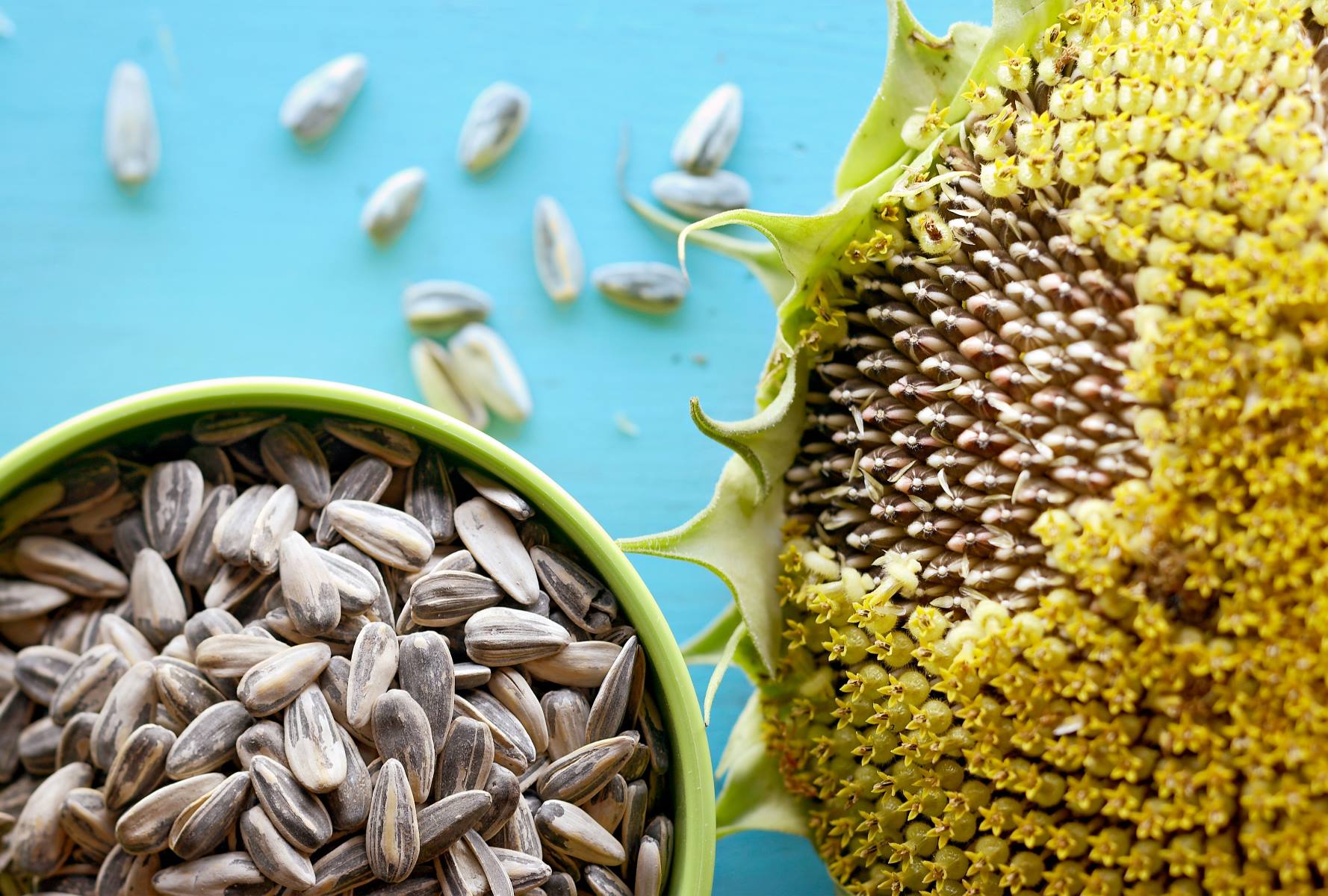
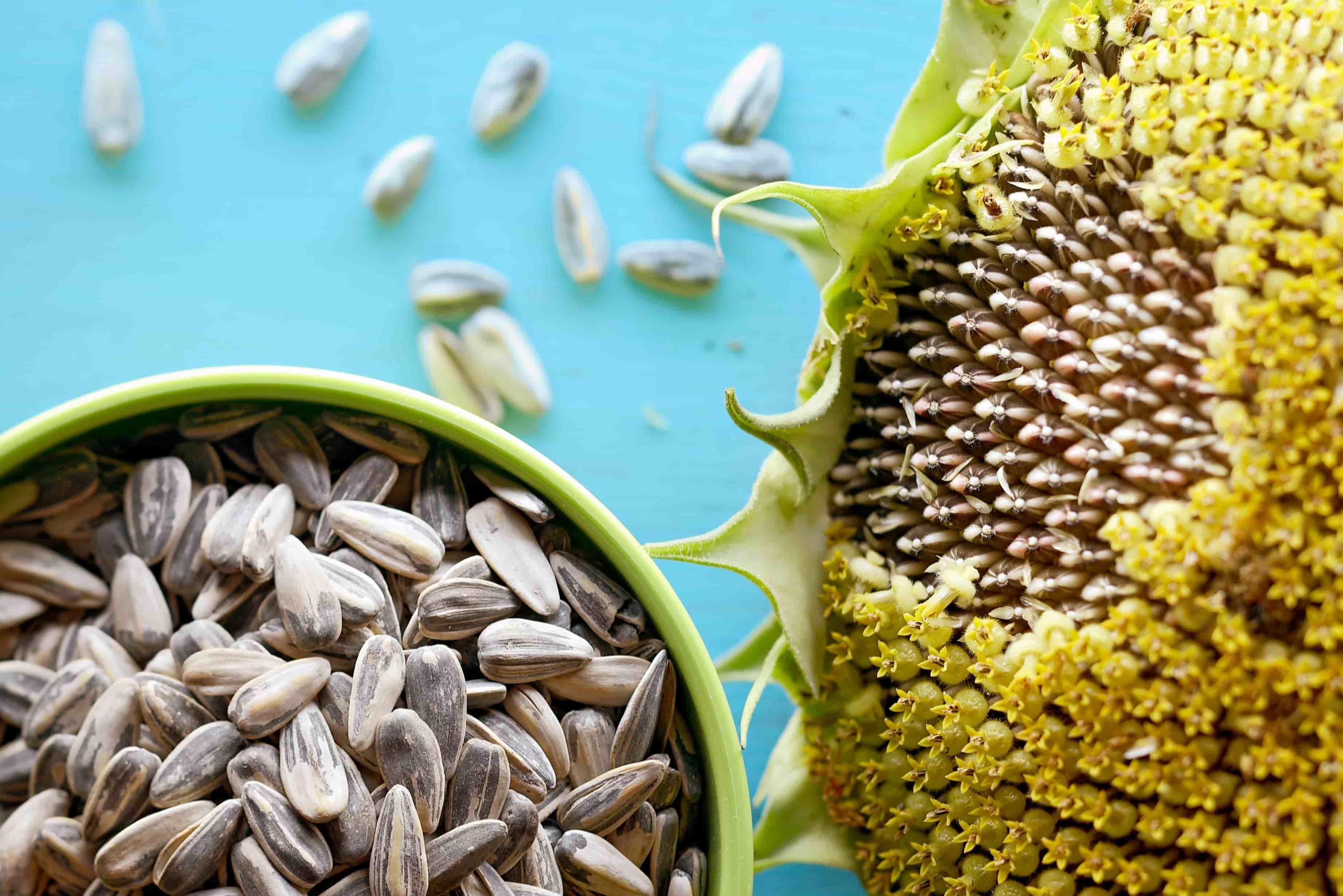
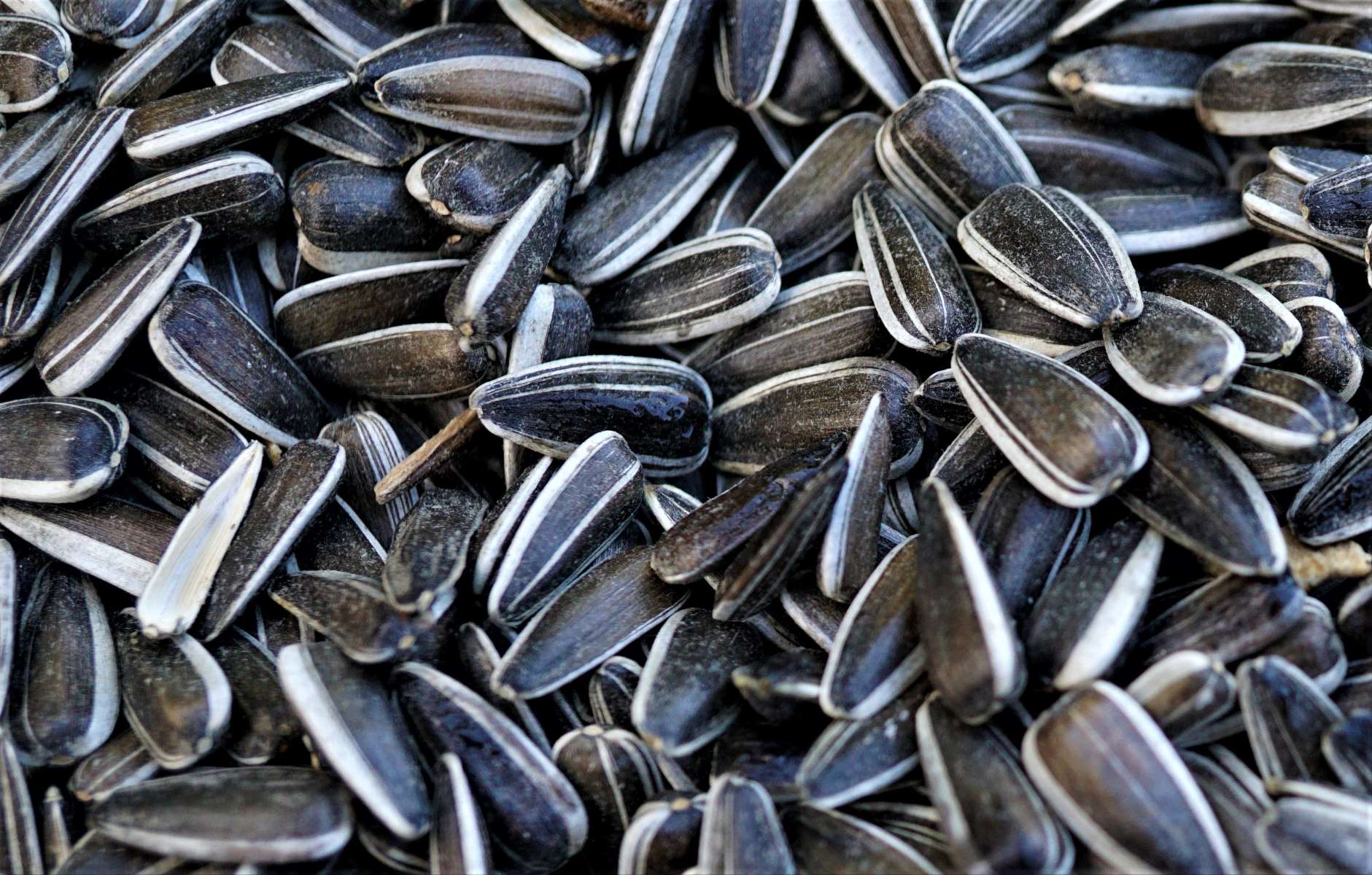
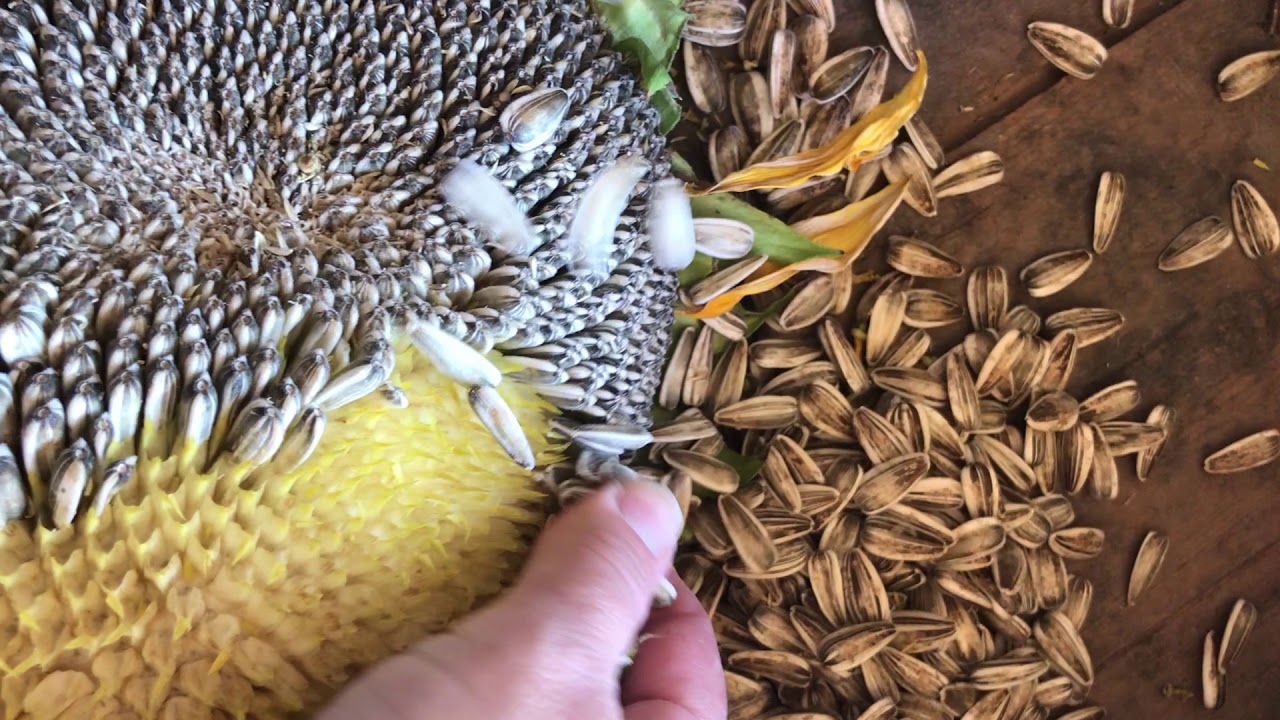

0 thoughts on “How Sunflower Seeds Are Made”